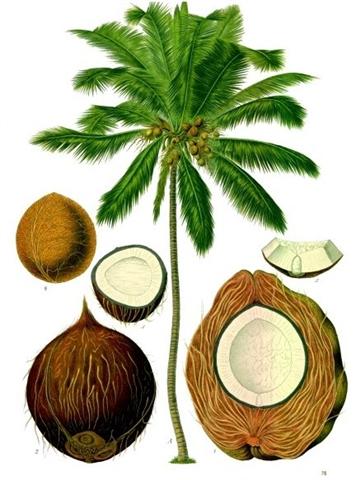4. Niu is the Polynesian name for the coconut palm
(though it was not grown on Easter Island - too far from the
equator):
 ... When viewed on end, the endocarp and germination pores give the fruit the appearance of a coco (also Côca), a Portuguese word for a scary witch from Portuguese folklore, that used to be represented as a carved vegetable lantern, hence the name of the fruit ... (Wikipedia) Evidently there is a connection with the Serpent of Eden: ... Though this is possibly the most ancient and most remote in origin of all Polynesian myths, referring as it does to that one who in our Genesis was 'more subtle than any other wild creature that the Lord God had made', its meaning has usually been disguised in printed versions on grounds of delicacy - Tuna being said to have 'struck Hina with his tail', or 'bitten her', or something of that kind. Since snakes are unknown in the Pacific Islands, our very old friend the phallic serpent must needs assume the form of a monster eel (tuna) in stories that require his ritual killing to originate the principal food-plant of the region ... (Legends of the South Seas) The coconut palm thrives on the sandy beaches close to the sea. It is located at the border between land and sea. On Hawaii the ceremonies at winter solstice included 'breaking the coconut': ... The correspondence between the winter solstice and the kali'i rite of the Makahiki is arrived at as follows: ideally, the second ceremony of 'breaking the coconut', when the priests assemble at the temple to spot the rising of the Pleiades, coincides with the full moon (Hua tapu) of the twelfth lunar month (Welehu) ... All taken together makes it quite certain that the niu glyph type stands at the border (or corner) between an old and a new season.
(turnip lantern, a kind of coco) |
